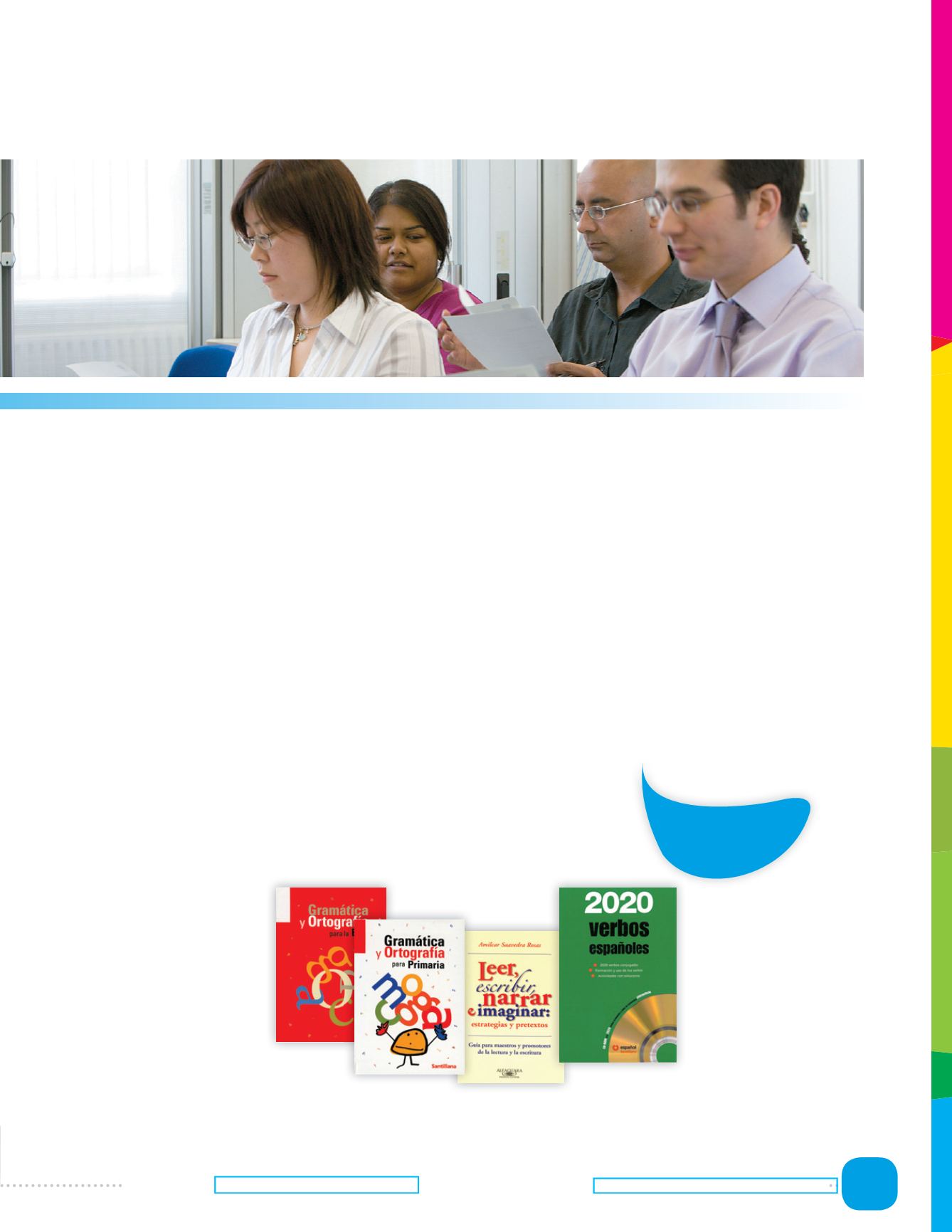
PROFESSIONAL DEVELOPMENT
SHOP ONLIN
I TECHNOLOGY SUPPOR
145
Gramática y ortografía para la escuela primaria y secundaria
(Grammar, Spelling, and Punctuation for Elementary and
Secondary Spanish Teachers)
978-1-61605-398-7 | Level: K–5
978-1-61605-399-4 | Level: 6–12
This session addresses common grammatical issues secondary
Spanish heritage language students encounter and strategies to
help address these problems. Participants benefit from a review
and clarification of basic and advanced grammatical and linguistic
concepts, including the teaching and learning of spelling and
punctuation, verb conjugations, common grammatical and linguistic
inaccuracies, and common errors of heritage speakers living in the
U.S. (e.g. Spanish/English false cognates, accent rules, language
variation, etc.).
Teaching Reading and Reading Comprehension in the Spanish
Classroom
978-1-61435-064-4 | Level: K–12
This session addresses strategies that students must develop to read
analytically: (a) recognize the meaning of a word or phrase within
the content of the other ideas presented in the text; (b) identify and
understand basic reading forms, and (c) identify the relationships
between the ideas presented in a reading selection in order to
analyze and synthesize the information. Participants learn effective,
research-based reading strategies to help teach reading in Spanish.
A Spanish “First Aid Kit:” Common Grammar, Spelling, and
Vocabulary Errors and How to Fix Them
978-1-61435-065-1 | Level: K–12
This session covers common grammar, spelling, vocabulary, and
punctuation errors made by Spanish learners and prescribes “fixes”
to avoid these recurrent problems. Helpful tips focus on specific
Spanish language errors and provide fun, creative solutions to
remedy these chronic issues, improving communication skills.
Differentiated Instruction in the Second Language Classroom
(Spanish)
978-1-61435-069-9 | Level: K–12
This session focuses on Carol Ann Tomlinson’s work, which explains
how foreign language teaching needs to address the differences
that occur within students’ learning profiles. Participants explore
how Spanish instruction that emphasizes student decision-making
and research is more natural and effective than instruction in which
students are served a “one-size-fits-all” curriculum. Participants learn
how to differentiate Spanish instruction and curriculum in three
different areas: Content, Process, and Products.
Reference resources.
See pages 148–149


